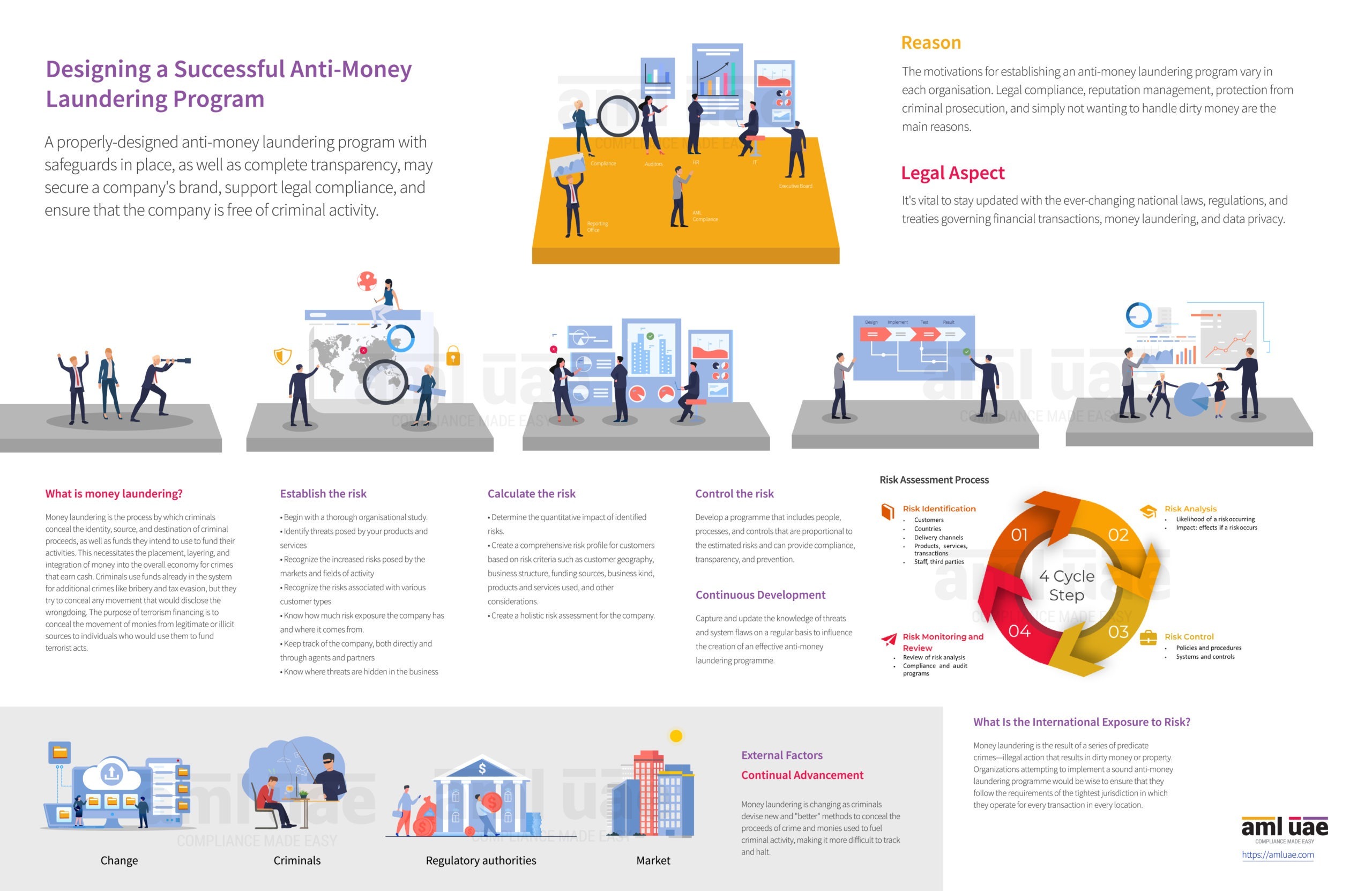Designing a successful anti money laundering program

Designing a successful anti money laundering program
Designing a successful AML Program involves a series of steps. It starts with risk identification, risk assessment and then their review and control. The AML compliance officer needs to define the procedures to counter the AML risks. Further, employees need to be trained on the AML compliance requirements and procedures.
Check our infographic on Enterprise Risk Assessment Program.
FAQs About Successful Anti Money Laundering Program
Use a risk-based approach to create an effective AML program. It means that entities will identify the risks they are exposed to, measure the intensity of these risks, and design the corrective measures based on the impact of these risks on the entity.
The five pillars of an AML program are:
- Detection of suspicious transactions and reporting
- Risk assessment of customers
- Development of internal policies, procedures and controls
- AML training for team members
- Independent audits at frequent intervals
The four key elements of the AML program are:
- Development and implementation of internal controls, policies, and procedures
- Appointment of a Compliance Officer
- A training program for the compliance team
- Independent review of the entity for compliance
The first and foremost step in establishing an AML program is identifying the risks of the business. These risks may be in various forms and types, including customer risk, geographic risk, country risk, channel risk, product/services risk, transaction risk, etc.